SDGs

The Yomiuri Shimbun is tackling the Sustainable Development Goals (SDGs) in education, welfare and other areas.
Participation in the SDG Media Compact
Since June 2020, we have participated in the SDG Media Compact a United Nation's initiative to advance awareness of the Sustainable Development Goals, or SDGs.
The SDG Media Compact is an association of media outlets around the world that cooperate in achieving the SDGs. Participating companies conclude an agreement with the U.N., broadcast issues toward the goals' achievement, and also take actions to achieve the goals.
The Yomiuri Shimbun and its sales outlets, Yomiuri Centers (YCs), have made efforts to produce, publish and deliver the newspaper in a eco-friendly manner and taken roles in other fields, such as promotion of the culture of the printed word and enhancing the quality of education.
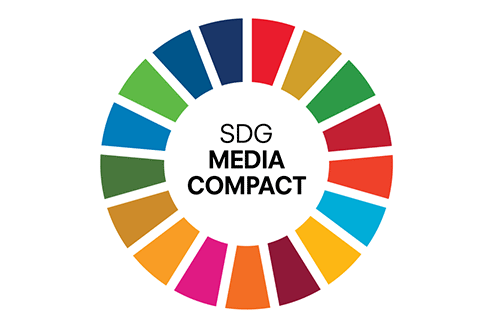
Educational Support Initiatives
Yomiuri Education Network
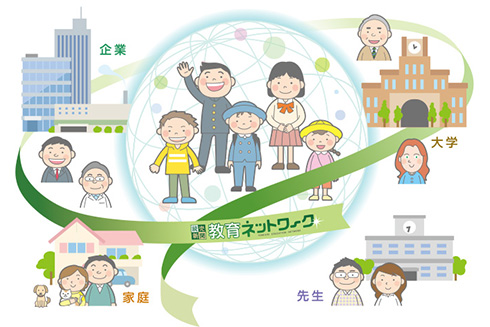
The Yomiuri Shimbun formed the network in October 2014 by calling on companies, universities, education committees, elementary, junior high and senior high schools, and other education-related groups. With the slogan of helping the next generation achieve the "ability to read and understand," it helps develop education in Japan. With its secretariat at The Yomiuri Shimbun Tokyo headquarters, the network organizes school visits and educational events. It also delivers information on unique education programs and progressive classes by participating companies and schools. It has about 25,000 members, both individuals and organizations. Participation is open to educators, school librarians and the general public.
Yomiuri Education NetworkPromoting the Culture of the Printed Word
Katsuji Bunka Suishin Kaigi (print culture promotion committee)
The Yomiuri Shimbun launched the Katsuji Bunka Suishin Kaigi (print culture promotion committee; chaired by the writer Jiro Asada) in 2002 in cooperation with the publishing industry and engages in the 21 Seiki Katsuji Bunka Project (21st century print culture project ) to protect and foster print culture, including books and newspapers. Its secretariat is in the Yomiuri Shimbun Tokyo headquarters. The group holds forums around the country, open lectures at universities, and other events, such as "Bibliobattle," a book reviewing competition.
Katsuji Bunka Suishin KaigiMedicine and Welfare Initiatives
Shouriki Welfare Foundation
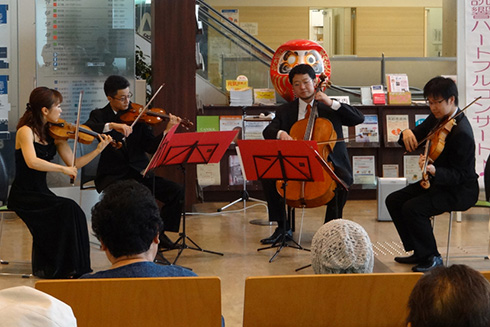
© Yomiuri Nippon Symphony Orchestra
The Yomiuri Shimbun provides robust support for cancer patients and their families around Japan through the Shouriki Welfare Foundation, a public intertest incorporated foundation engaged in providing aid to cancer patient groups among other endeavours.
The Shouriki Welfare Foundation was founded in 1943 with the support of Matsutaro Shoriki (1885-1969), who was president of The Yomiuri Shimbun, and previously the foundation conducted such activities as donations of wheelchairs and hearing aids to welfare institutions. It has conducted social contribution activities for many years on behalf of The Yomiuri Shimbun in the areas of medicine and welfare. It acquired the status of public interest incorporated foundation in 2009.
The foundation provides financial aid to cancer patient groups nationwide, whose activities are otherwise restricted due to lack of funds, and to medical institutions working to improve the quality of life of cancer patients. The foundation has extended financial assistance to as many as 400 cancer patient groups. It also organizes the Yomiuri Nippon Symphony Orchestra Heartful Concert at designated cancer treatment hospitals nationwide. Professional musicians from the orchestra have performed at more than 80 medical institutions thus far.
Shouriki Welfare FoundationYomiuri Clinic
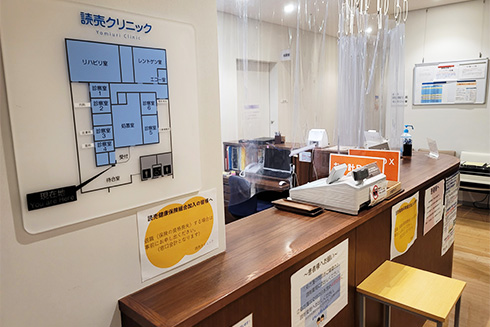
This medical institution is on the sixth floor of the Yomiuri Shimbun Building in Otemachi, Tokyo. Its predecessor was the Yomiuri Shinryo-jo (doctor's office) established in Kanda-Misakicho, Tokyo, in 1929. For more than 90 years, the clinic has provided medical services to not only Yomiuri employees but also local residents. It assumed the current name in 2014 when the new head office building was completed in Otemachi.
Yomiuri ClinicWelfare Initiatives
Yomiuri Light and Humanity Association
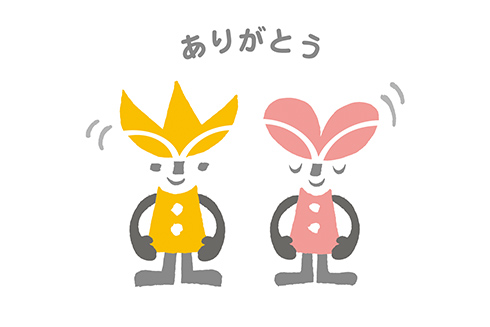
Through the Yomiuri Light and Humanity Association, a social welfare corporation in the Yomiuri Shimbun Group, we have engaged in initiatives to support people with disabilities and people affected by disasters. In the wake of the Great East Japan Earthquake of 2011, it managed to fundraise more than ¥2.9 billion, which was spent for affected people.
In response to the spread of the COVID-19 pandemic, it held a fundraising campaign to support medical professionals. Another fundraising campaign was conducted in 2023 for the major earthquake in Turkey.
The association was established through the 1971 merger of Yomiuri Hikari-no Purezento Kyokai (Yomiuri light present association) for people with visual impairments (established in 1961) and the Yomiuri Ai-no Purezento Kyokai (Yomiuri love present association) in support of children with severe mental and physical disorders and facilities for them (established in 1969). For more than 50 years, it has conducted social contribution activities in the field of welfare on behalf of The Yomiuri Shimbun.
In addition, the association also manages the Yomiuriland Hana House, a specialized nursing home for the elderly and Yomiuriland Care Center, a long-term health care facility for the elderly.
Yomiuri Light and Humanity AssociationDiversity
Work-Life Balance
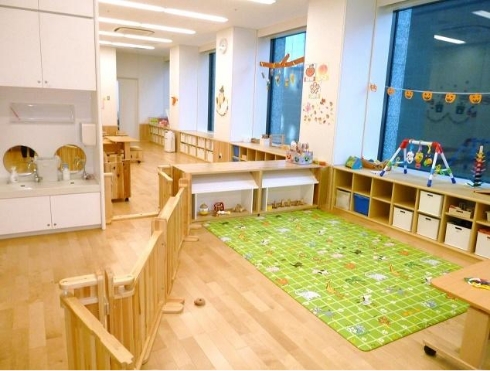
The Yomiuri Shimbun's Tokyo headquarters and Osaka headquarters acquired the Eruboshi certification as an outstanding company in implementing initiatives related to women's participation and advancement and the Kurumin certification for initiatives in support of balancing work and child-raising. The Seibu headquarters also acquired Kurumin certification. We encourage our employees to take childcare leave, and the rates of those who took childcare leave at the Tokyo headquarters in fiscal 2022 were 100% for women and 37.5% for men.
In addition, the Tokyo headquarters established the Yomikaki no Mori Nursery in 2014, the first such daycare facility to be established at a newspaper company in the country. We also hold talks between labor and management to consider work-life balance. These initiatives were commended and we received an outstanding performance award, the 8th Work-Life Balance Award in 2014 from the Japan Productivity Center, a public interest incorporated foundation.
Our goal is to establish a working environment where people feel motivated and can work flexibly to achieve results.
Tokyo Headquarters Participates in The Valuable 500
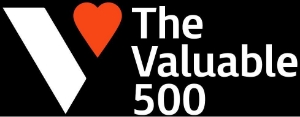
The Yomiuri Shimbun states in its creed that we will "promote humanism based on individual dignity and basic human rights." Based on this principle, we aim to realize a society where people with disabilities can play an active, energetic role at work and have conducted a wide range of activities to this end beyond reporting and media coverage.
Prompted by our participation in The Valuable 500, which supports the social integration of people with disabilities, we will actively promote these activities further.
Other Initiatives
Commercialization of the Industry's First Environmentally Friendly Printing Technology
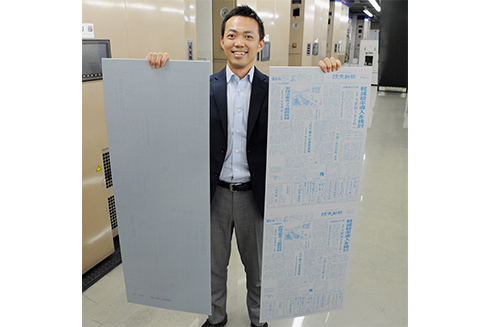
The Production Bureau of our Tokyo headquarters received an award in the technology division of the 2015 Japan Newspaper Publishers and Editors Association Awards for commercializing the industry's first printing technology to reduce environmental impact in the newspaper printmaking process.
The new system, commercialized together with Fujifilm, omits the development process that involves washing off developing solution. The photosensitive layer that is not hardened by light is absorbed with the ink into the newspaper and removed from the printing plate. This technology is already in practical use for printing items other than newspapers, but it was considered difficult to apply to newspaper printing. No use of development solution equals to no waste liquid.

